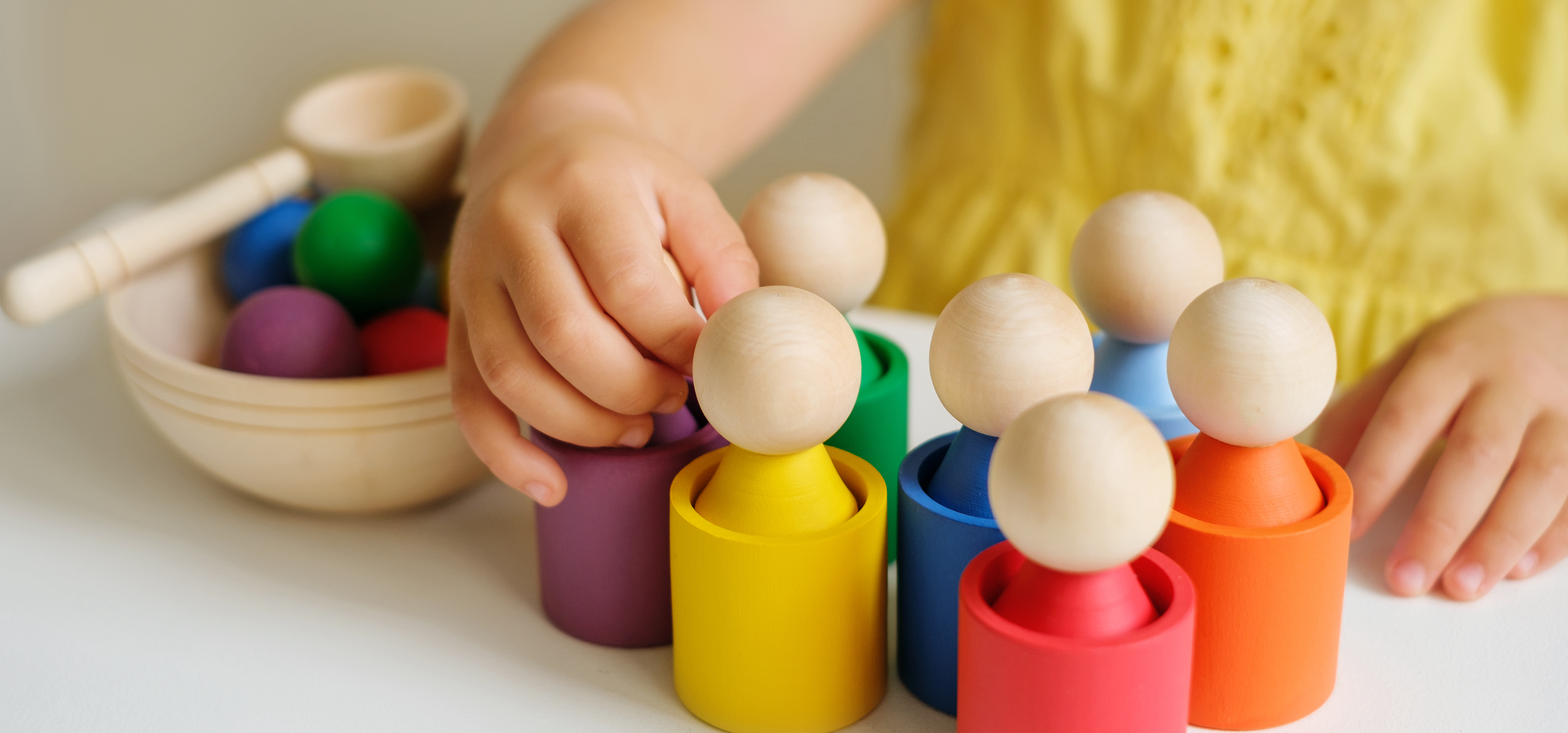Loading...
Sensorial
Learning Through the Senses
For young children, learning starts with the senses. Sensorial work in Montessori is how children come to know the world—not just with their minds, but with their eyes, fingers, ears, and nose. These early explorations lay the foundation for observation, comparison, and logical thinking.

Why It Matters
Visual Skills: Matching by color, size, and
shape helps children organize what they see.
Auditory Skills: Sound boxes and bells build
the ability to hear differences in pitch and volume.
Tactile Skills: Feeling and comparing surfaces
teaches texture, weight, and form.
Smell & Taste: Children explore familiar and
new scents using herbs, spices, and food-based materials.
Stereognostic Sense: Feeling objects without
seeing them builds memory and focus through touch alone.
The Sensorial Journey
- Color Grading: Sorting colors from lightest to darkest builds visual discrimination.
- Tactile Discrimination: Comparing smooth vs. rough or soft vs. bumpy textures.
- Auditory Discrimination: Matching and sequencing sounds using bells or sound cylinders.
- Olfactory Discrimination: Identifying scents like mint, lemon, or lavender.
- Dimensional Exploration: Using blocks and cylinders to explore width, height, and length.
- Geometric Shapes: Naming and matching circles, triangles, and solids like spheres and cubes.
“My daughter loves the color tablets and touch boards. She’ll close her eyes and tell me which is smoother or warmer—it’s amazing to watch.”